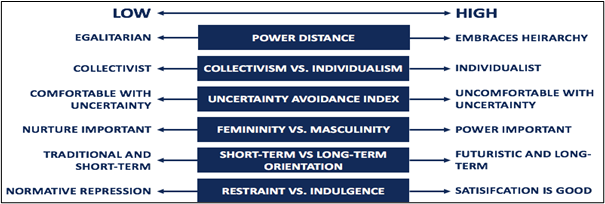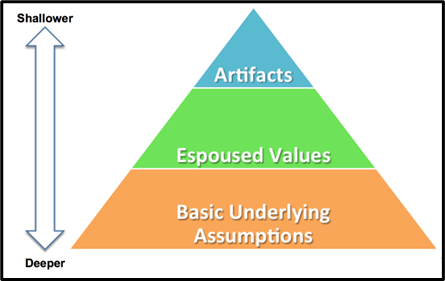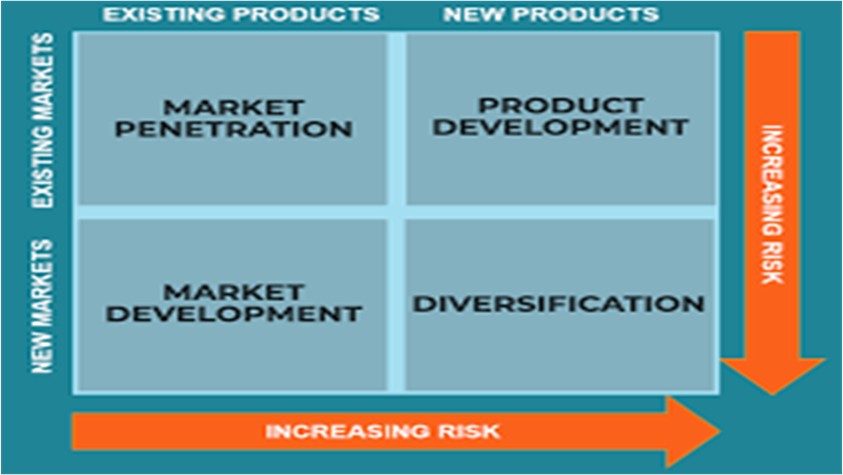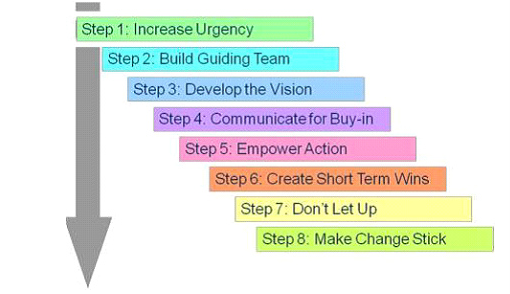MOD005489 International Human Resource Management Assignment Sample
Module code and Title: MOD005489 International Human Resource Management Assignment Sample
1. Introduction
International human resource management (IHRM) is a set of business activities within employee management to strive business objectives for achievement of competitive advantages. According to Banfield et al. (2018), HRM activities are important for managing organisational culture and mission in an international scenario. Joint venture market entry strategy has been used by multinational companies to acquire a new culture of target country with acquisition of local partner’s knowledge and infrastructure.
This study has chosen Primark Stores Ltd. which is a UK based clothing retail company operating internationally. This company opened its first clothing store in 1969 in London and currently operates a total of 380 stores in 13 counties of America and Europe (PRIMARK, 2022). It has become a leading value clothing brand in 2019 and its revenue has amounted to a total of £7.79 billion (STATISTA, 2022).
In this study, target country for this company is Sweden, aimed to offer innovative fashion, homeward and beauty products to acquire current fashion trends. Primark Stores Ltd. has used a joint venture market entry strategy and changed HR strategies and practices for target market of Sweden and desired to achieve sustainable business in this country.
2. Analysis of national culture of target country and recommended HR strategies and practices adaptation in culture of target country
National culture of Sweden
Swedish culture is based on individualism and equality and Swedes are profounder of respect and integrity. National culture of this country has been developed with Globe Project model dimensions. This country is included in Northern Europe cluster in Globe Project with Finland, Norway and Denmark.
 Figure 1: Dimensions of Hofstede model (Source: Influenced by Crawshaw et al. 2020)
Figure 1: Dimensions of Hofstede model (Source: Influenced by Crawshaw et al. 2020)
| Dimensions | Analysis |
| Power Distance | Sweden is placed in Globe as a low power distance society with minimum usage of dress codes and practical working attitude. |
| Uncertainty Avoidance | It is relatively low and has a low preference to avoid uncertainty in society. |
| Performance Orientation | This country has achieved a low score in performance orientation and developed as a welfare state with a combination of capitalism and socialism (Crawshaw et al. 2020). |
| Assertiveness | Sweden is very low in case of Assertiveness and Swedes are very reserved and cold-hearted to reveal their emotions. |
| Future Orientation | This culture encourages savings for future and promotes long-term planning for financial security (Steers and Osland, 2019). |
| Humane Orientation | Its tradition takes care of elder population and sick persons and achieves collective responsibility in family. |
| Institutional Collectivism | Organisations have flexible working hours and workplaces have offered both maternity and paternity leave (Cameron. and Green, 2019). |
| In-Group Collectivism | Organisational hierarchy system as reflected egalitarian practices and policies used to protect and encourage egalitarian values. |
| Gender Egalitarianism | Sweden is famous for gender equity and promoted equal status to men and women in labour market, social debates and political status. |
Table 1: Globe Project’s 9-dimension analysis for Sweden (Source: Created by author)
Organisational HR strategies and practice of Primark
HRM function and development is significant execution of Primark that has promoted recruitment and talent management process effectively. HR strategies and practice of Primark stores have been described below:
Primark has attempted their human resource management with improvement of a skilful labour force that can develop organisational benefits and can complete organisational needs. Human resource functions in Primark have included selection, training and development. In all of these contexts, Primark has faced staff conflict and engagement issues on international ground. That is why this company desired to adopt cultural management in international business.
Influenced by Cameron and Green (2019), workers motivation and performance management is an important business criterion of Primark stores as this company became a fashion company with value of “amazing fashion at amazing price”. Therefore employee motivation and their performances have been developed with health and safety promotion; collaboration management and regular payment and rewards.
Primark stores have aimed to achieve a successful diversity management to encourage collaboration with their global team. Effective collaboration within global team used to achieve innovative and different business ideas that have promoted successful factors of Primark in their international presences.
Recommendations for HR strategies and practices adaptation in Swedish culture
HR practices in Primark stores have achieved a successful journey with implementation of performance and talent management strategies within their global team. This company has aimed to enter in Sweden market and so they have to acquire Swedish culture to some extent to promote local sales and to attract local talents.
Influenced by Lewis (2019), Schein- Aspects of Culture model can be used to recommend critical cultural management strategies and practice in their talent pool within Sweden business. This model has been developed in their HR strategies has achieved a successful journey in culture in Sweden market.
 Figure 2: Schein’s culture triangle (Source: Influenced by Al-Sarayrah et al. 2016)
Figure 2: Schein’s culture triangle (Source: Influenced by Al-Sarayrah et al. 2016)
Artefacts are a very visible organizational cultural sign that has developed as a shallowest indicator. According to Al-Sarayrah et al. (2016), this indicator has included dress-code, job-titles, workspace style and design and developed integrity of employees towards work culture. Sweden has been identified with low indicators of Artefacts.
HR practice of Primark can strategies business in Sweden with developing all these indicators and their employees will be engaged with collaborative rule. They can feel more engaged with company that will surely develop their motivation and engagement towards business success.
Employees with specific job titles can motivate them with proper execution of work as they can identify their exact job role within organization and dress-code can bind employees towards organisational culture effectively in Swedish market.
Espoused Values has been exposed to express traditional culture of organization for ways of working. As mentioned by Farndale et al. (2019), this is deeper in cultures than artefacts and achieves the middle part of this model. Primark can use this factor to include specific organization behaviors and values and that can assist employees with vision and mission of company.
Swedish culture achieved a good score in global project for gender equity in workplace and society (Zhu, 2019). Primark can promote this to acquire a talent pool from locals of Swedish and men and women have to achieve similar opportunities for selection and promotion. That would help to easily organisational culture with Sweden and can develop organisational profitability on a large scale.
Underlying Beliefs is last and deeper factor of Schein’s culture triangle that has been used for reflection of organisational business on execution of organisation work. As stated by Horak et al. (2019), an organisation should include an assumption of common belief that can be used to recognize organisation specifically. In Sweden market, Primark stores can use this deeper indicator to attract client base of Sweden with a specific and recognised work culture by following equity and collectivism Swedish culture.
However, management and implementation of this model can achieve a sustainable business in Sweden’s fashion market. Primark has to maintain “The Equality Act 2010 (c. 149)” that will manage gender equality practices and effectively promote their business within equal Swedish culture. According to Sposato and Rumens (2021), The Trade Union of UK has been developed to maintain pays of employees, professional development of employees and manage professional behaviourism.
45% HR directors of Sweden have mentioned that this union has greatly influenced their organisational culture and helped to maintain hierarchy ethics. Primark stores can use influence of the union to maintain their new organisational culture in Sweden and HR practitioners can effectively manage their strategies as per aim of this union. This company can effectively use roles and performance of employees with regular increments of pay and can develop their engagement with professional development training. Therefore, a strong talent base can be generated for Primark in Sweden market and can achieve strong brand profit in that country.
3. Evaluation of potential recruitment strategies for joint venture in target country and recommendation for combination of staffing approaches
Expansion of business in different markets allows business to have more potential and help to grow revenue massively. Market entry is a way to maximize business and help to analyse business models in domestic and international markets. Ansoff’s Matrix model can be introduced to analyse position of Primark for market entry in Sweden.
 Figure 3: Ansoff’s matrix (Source: Influenced by Al-Sarayrah et al. 2016)
Figure 3: Ansoff’s matrix (Source: Influenced by Al-Sarayrah et al. 2016)
Market penetration has been developed for growth strategy and Primark has used pricing strategies, sale promotion via advertisement strategies to motivate customers. Their loyalty cards to customers have helped to develop in existing market with existing products. In product development, Primark has introduced bags and shoes at a reasonable price that has achieved an existing market with a new product range.
According to Ayentimi et al. (2018), market development is the business goal of Primark and adopted dealing in existing products in their new American countries. In this perspective, diversification has been used to encourage repeating purchasing of new customers with new products. In market development in Sweden, Primark has used Joint venture market entry strategy. Joint venture is a business arrangement with more agreement of parent companies to create a new business base. Each parent contributes capital, technology and knowledge to access more distribution networks in market.
Potential recruitment strategies for joint venture
 Figure 4: Potential recruitment strategies for joint venture (Source: Influenced by Collings et al. 2018)
Figure 4: Potential recruitment strategies for joint venture (Source: Influenced by Collings et al. 2018)
Market Research is most important part of a business before requiting joint ventures. In this perspective, Primark has to set revenue, gain and deduction of prices as per current position of Sweden market. Influenced by Collings et al. (2018), strategic alliances with partners can be managed by this strategy with dealing with contribution of alliances and development of Primark. Proper research of current customers of Sweden’s fashion market has to be analysed and based on this, choosing potential partners for joint ventures can be managed.
Evaluating options is a joint venture recruitment strategy and this can be evaluated with a detailed discussion of beneficial options of both parties (Garavan et al. 2019). In alliances, partners have to be recognised with good profit and so Primark has to mention their existing capabilities along with business goals in Sweden. This can help to manage business goals along with interest in joint ventures.
Negotiation is most common factor of new business development. Primark has to use this factor for recruiting potential joint ventures and has to understand the profitability of partners (Alfes et al. 2019). Practice of this strategy can help to bind potential partners easily and can attach them effectively for future investment or collaboration as per necessity.
Business valuation and planning is an important strategy to recruit joint ventures that deal with discussion of contribution of partners. Along with this, a detailed business plan has been discussed for mutual benefits and developed business plan accordingly (AM et al. 2020). Primark can share their business plan to joint ventures and can analyse their potential and capability to fulfil this and can plan accordingly.
Due Diligence is checking of credentials of joint ventures along with trust and verification. According to Samimi and Sydow (2021), this strategy can develop trustful relationships with partners and achieve effective business practice in new markets. Primark has to collaborate with potential partners in Sweden with a detailed verification of partners and that will help to generate loyalty towards new customers in Sweden.
Recommendation for staffing approaches
Staffing approach has been developed in HR strategies to fulfil business goals and ensure workforces to meet goals effectively. According to Cooke (2018), ensuring a workforce with adequate performance and talent has developed different staffing approaches such as Ethnocentric, Polycentric, Regiocentric and Geocentric. Ethnocentric staffing approach is fully focused on norms and practices of companies in their home country and HR used to keep business perspectives as per national objectives and so it inspired acquisition of local talents.
Alternatively, a polycentric staffing approach has been imposed for management in other countries rather than local one. According to Ahammad et al. (2020), HR managers used to consider other county nationals for selection to develop innovation in workforce. Regiocentric approach is little different from polycentric and in this, upper managers are formed with a national country and other employees are required from different regions rather than native country. Additionally, geocentric staffing approach has been used for requiring all upper and subordinated levels globally and used to welcome all global talent to diversify organisational culture as well as innovation of business.
Primark is recommended to use a regiocentric staffing approach for managing their workforce to achieve profit in Sweden market. This approach will keep upper managers from UK as they have a detailed knowledge and experience about business capability of Primark. National based recruitment in upper managerial roles from UK can maintain the actual root and traditional of Primark business and also can guide their subordinates by maintaining core traditional business belief.
Influenced by Haak-Saheem and Festing (2020), subordinates are being recruited from different regions in this staffing approach and Primark can recruit local Sweden talent and can diversify their business execution team. UK based upper management can analyse new working perspective and culture of new recruited employees from Sweden. Such a workforce scenario would help Primark business to achieve new culture by keeping their mission and vision same and can easily develop employee diversity and effective collaboration scenario with managerial roles of upper serviced management.
4. Change issues in developing new HR strategies and practices in target country
Change management is an important perspective in international HR practice and strategy that has dealt with adapting new corporate strategies and to handle the workforce environment. Primark has adopted changes to achieve sustainable management of employee base and helped to manage a global team with experience of collaboration and integration.
Maslow’s Hierarchy of Needs
Maslow’s Hierarchy of Needs is a theory to motivate employee base along with needs of humans and behaviours of workforce. This is a motivational theory that has been adopted to manage Sweden’s working team with sustainable forces of UK business.
 Figure 5: Maslow’s Hierarchy of Needs (Source: Influenced by Haak-Saheem and Festing, 2020)
Figure 5: Maslow’s Hierarchy of Needs (Source: Influenced by Haak-Saheem and Festing, 2020)
Physiological needs have been used for survival of employees in Primark workforce and that has used food, air and relaxation. HR practice in Primark can ensure physiological safety of employees to achieve employee retention. According to Mulombe and Mugova (2018), needs of safety is another need of employees and they need safety and security in family and society.
Policy and initiative of Primark HR management can ensure this to manage workforce motivation. Love and belonging needs to be kept in minds of HR management as this plays a great role to manage collaboration among international teams. Needs of esteem have to be maintained in changes of HR practice in Primark and this ensures dignity, mastery and independence among employees.
Self-actualization needs are highest level in this change model that has been used to meet the desires of individuals. Primark can use recognition of individuals in this perspective and this will help to develop sustainability of workforce to gain more competitive advantages and brand profit from Sweden market.
Kotter 8 Step Change Model
 Figure 6: Kotter 8 Step Change Model (Source: Influenced by Mulombe and Mugova, 2018)
Figure 6: Kotter 8 Step Change Model (Source: Influenced by Mulombe and Mugova, 2018)
Urgency increment can be used by HR management of Primark which will effectively examine market opportunities and can align workforce effectively to cope up with effective interventions. Guiding Primark working team can encourage a powerful change coalition that will develop integration among global teams. As mentioned by Alfes et al. (2019), vision development is needed that will help to guide employees towards specific vision and can effectively manage brand profitability in Sweden market.
Communication of vision is needed that helps to manage training and performance development of employees for making a long-run retail chain in Sweden. Employee action has been included in this model that helps to analyse market barriers and selling obstacles and change action of working accordingly.
Changes of HR practices of Primark can use short-term wins that will provide a feel of victory to employees after completion of each short stage. Such changes can develop engagement and working flexibility among employees effectively. Use of short-term win for managing employee base has developed a change model in workforce and inspired market entry strategy. According to Mulombe and Mugova (2018), Don’t let up stage has been used for continuous motivation of employees based on individual encouragement and experience.
Such consolidating gains have developed Primark global team with new entry process in Swedish market. Make change stick has been used anchoring corporate culture which will be used for internal workforce management as per organisational aspects. This is last stage of this change model that has changed workforce to manage profitability in Sweden and can be used to make long run businesses with achievement of a new customer base. In such a way, Primark can develop their business and would encourage new customer base building after Sweden expansion.
5. Conclusion
It can be concluded that HR strategies and practice has been used by Primark stores to encounter fashion market of Sweden. Primark is a UK based leading retail company operating their business successfully Sweden is a both capitalist and socialist country with practices of gender equity. This culture has insisted on workforce of country to develop working flexibility. Based on this culture, Primark has aimed to enter into Sweden with a joint venture market entry strategy.
This entry strategy can fulfil business growth objectives of Primark in Sweden. Primark store has used effective joint venture strategies to gain potential alliances. Entry strategy has been used for developing business in Sweden and strategies their business with product development to develop a huge customer base with their cultural acquisition. Change management model is introduced that has developed the effectiveness of company and influenced HR strategies and management for sustainable changes in workforce and market in Sweden.
Staffing approach can be implemented in this business model with regiocentric staffing approach and developed business strategies with proper market analysis. This staffing approach can help to manage specific working culture in hierarchical system of Primark that can motivate overall business in target county Sweden.
References
Ahammad, M.F., Glaister, K.W. and Gomes, E., (2020). Strategic agility and human resource management. Human Resource Management Review, 30(1), p.100700.
Alfes, K., Shantz, A.D., Bailey, C., Conway, E., Monks, K. and Fu, N., (2019). Perceived human resource system strength and employee reactions toward change: Revisiting human resource’s remit as change agent. Human Resource Management, 58(3), pp.239-252.
Al-Sarayrah, S., Tarhini, A., Obeidat, B.Y., Al-Salti, Z. and Kattoua, T., (2016). The effect of culture on strategic human resource management practices: A theoretical perspective. International Journal of Business Management and Economic Research, 7(4), pp.704-716.
AM, E.N., Affandi, A., Udobong, A. and Sarwani, S., (2020). Implementation of human resource management in the adaptation period for new habits. International Journal of Educational Administration, Management, and Leadership, pp.19-26.
Ayentimi, D.T., Burgess, J. and Brown, K., (2018). A conceptual framework for international human resource management research in developing economies. Asia Pacific Journal of Human Resources, 56(2), pp.216-237.
Banfield, P, Kay, R, and Royles, D (2018). Introduction to Human Resource Management (3rd Edition). Oxford;Oxford University Press.
Cameron, E. and Green, M., (2019). Making sense of change management: A complete guide to the models, tools and techniques of organizational change. Kogan Page Publishers.
Collings, D.G., Scullion, H. and Curran, D., (2018). International human resource management. In Human Resource Management (pp. 378-395). Routledge.
Cooke, F.L., (2018). Concepts, contexts, and mindsets: Putting human resource management research in perspectives. Human Resource Management Journal, 28(1), pp.1-13.
Crawshaw, J., Budhwar, P. and Davis, A. eds., (2020). Human resource management: Strategic and international perspectives. Sage.
Farndale, E., Horak, S., Phillips, J. and Beamond, M., (2019). Facing complexity, crisis, and risk: Opportunities and challenges in international human resource management. Thunderbird International Business Review, 61(3), pp.465-470.
Garavan, T.N., McCarthy, A. and Carbery, R., (2019). An ecosystems perspective on international human resource development: A meta-synthesis of the literature. Human Resource Development Review, 18(2), pp.248-288.
Haak-Saheem, W. and Festing, M., (2020). Human resource management–a national business system perspective. The International Journal of Human Resource Management, 31(14), pp.1863-1890.
Horak, S., Farndale, E., Brannen, M.Y. and Collings, D.G., (2019). International human resource management in an era of political nationalism. Thunderbird international business review, 61(3), pp.471-480.
Lewis, L., (2019). Organizational change. In Origins and Traditions of Organizational Communication (pp. 406-423). Routledge.
Mulombe, S.Z. and Mugova, C., (2018). An Investigation into the Causes of Continuous Resistance to the Implementation of a Centralised HR Support Services within a Global Mining House. In Proceedings of the International Conference on Industrial Engineering and Operations Management. Paris, France.
PRIMARK (2022) About us. Available at: https://www.primark.com/en-ie/aboutus [Accessed on: 09.06.2022]
Samimi, E. and Sydow, J., (2021). Human resource management in project-based organizations: revisiting the permanency assumption. The International Journal of Human Resource Management, 32(1), pp.49-83.
Sposato, M. and Rumens, N., (2021). Advancing international human resource management scholarship on paternalistic leadership and gender: the contribution of postcolonial feminism. The International Journal of Human Resource Management, 32(6), pp.1201-1221.
STATISTA (2022) Primark revenue from 2008 to 2022. Available at: https://www.statista.com/statistics/383785/primark-revenue-worldwide/%23:~:text%3DOver%2520the%2520years%252C%2520Primark%2520steadily,revenue [Accessed on: 09.06.2022]
Steers, R.M. and Osland, J.S., (2019). Management across cultures: Challenges, strategies, and skills. Cambridge University Press.
Zhu, J.S., (2019). Chinese multinationals’ approach to international human resource management: A longitudinal study. The International Journal of Human Resource Management, 30(14), pp.2166-2185.
Know more about UniqueSubmission’s other writing services:

